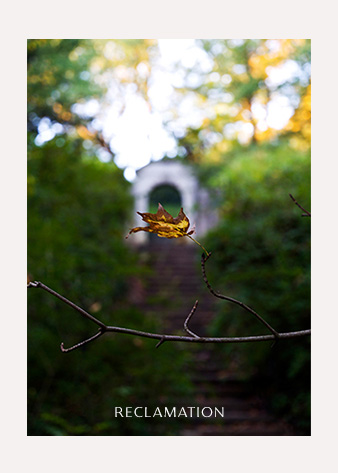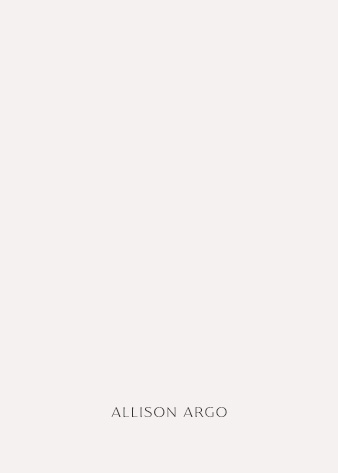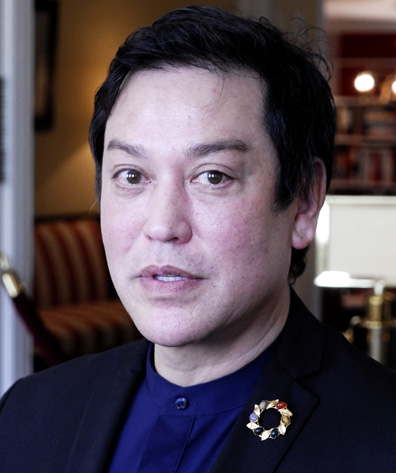
“We have to move beyond
the emotional response to become
change makers who can articulate
from a very high standard.”
DANA TAI SOON BURGESS
American dancer and choreographer, USA
February 29th, 2024
OPEN WINDOWS | In Conversation
Heera Alaya: How would you describe yourself as a hyphenated person, both as an individual and as an artist?
Dana Tai Soon Burgess: There are so many ways we can understand our intersectional identifications. I have multiple hyphens. As a fourth-generation Korean-American, this is a hyphenated part of myself. And the other is a dance artist who often works with the inspiration of the visual arts.
The fabric of America right now—if we look at all the different threads we represent—is getting much more sophisticated in the way we see ourselves in our environment. The whole tapestry of America is because we have different alignments. The alignment can be a city, a group of individuals, a cultural background, or gender; all those things create the portfolio of who we are.
You speak about the impact of Santa Fe [New Mexico, USA] on your early years. What was it about the essence of Santa Fe and visual artists [sculptors, photographers and painters] that shaped your foundation?
My parents were both visual artists (My father has since passed away.). My mother lives in Santa Fe and makes art daily, and she’s commissioned for her art all the time. So, I grew up looking at the visual arts process from start to finish. I grew up in a predominantly Hispanic neighbourhood, going to bi-lingual schools (English and Spanish) and then going home to a much more Asian household. There was always a diversity of cultures, and I learned that movement is the fundamental language that bridges all those experiences.
I grew up in a Latino community, in an Asian household (Korean-Hawaiian mother and Irish-English Scott-German father). In addition to the diversity within my home, the history of Santa Fe goes back to the 1500s (Before that, it was an indigenous settlement). So there are Hispanic families that go back to the 1500s, and it is a highly catholic community, and I wasn’t catholic. So, many things were very much about a community with cultural insiders, making me feel more like an outsider.
What were some stereotypes of Asian Americans? And how did you navigate through discrimination?
My childhood nickname is Chino, which means Chinese man. However, Chino is a pan-Asian term used in Spanish for anyone who looks Asian or has Asian features; you can be called a Chino if you are Korean, and you can be a Chino if you are Japanese, Thai, or Filipino. So, I rejected that perception from others because it didn’t align with my specificity of feeling Korean-American.
But as I got older and understood that it [Chino] could be a term of endearment, I embraced “Chino” as part of my identity because it signifies the community I grew up in.
How does discrimination take place in America?
Within American culture, we have to go back to the exclusionary acts of the late 1800s to understand the systemic racism and perceptions that exist here. And when I say the Exclusion Acts, it is the legal exclusion of immigrants and Asians to America that goes way back. And then, there were exclusionary laws which did not allow Asian Americans to own land in specific locations. Some of those laws existed until the 2000s, which many people don’t realise.
These laws were still on the books but not necessarily enforced. In Mexico, the exclusionary law for Asians and Asian Americans owning land was one of the latest, in the 2000s, to be amended. I also think that we have this whole series of socio-politically created caricatures, which come about due to the idea of the yellow peril [The Yellow Peril is a racist colour metaphor that depicts the peoples of East and Southeast Asia as an existential danger to the Western world.].
At times in America, Asia was exoticised and of interest, and at other times, politically, they were at odds with Asia. Suddenly, this threat of this yellow peril from the East creeps into everything. So, from a very early age in America, characters including Fu Manchu, Ming the Merciless, and the Dragon Lady are still within American consciousness.
And then we have this whole shift in terms of looking at Asians as this model minority in America, taking away the reality of the difficulties in language access, medical access, all of these different issues that every new American struggles with. And yes, the model minority, in a way, takes away our diversity; it takes away our struggle and resilience. So, discrimination in America takes place on multiple levels.
I remember being in several meetings—even in academia, when I was a professor—and when I would voice myself and feel passionate about a specific issue that was going on, I could always tell there was this shock that I had a voice. There is an assumption that Asians and Asian Americans are quiet, go along with the status quo, and don’t have ideas of how systems work and how systems must change. I still notice this conjecture—that we won’t speak up.
I think it is so important now, especially with the resurgence of anti-Asian violence in this country and abroad, that we speak up, that we are heard and that we exemplify in every situation. We are a diverse community, we have diverse voices, we have needs within this country [America]that aren’t always being met, and things can get better and should get better.
Is it essential to be the head of an organisation [Dana Tai Soon Burgess Dance Company] to effect change?
We can all effect change no matter our medium—writing, dance, painting, or politics. For me, having a dance company was a way to explore an evolving aesthetic. Within that aesthetic is a reflection of my interest in equity and equality issues.
Why do you emphasise listening?
I was referring to where we are within the cultural conversations in the landscape of America right now. Of course, there is a lot of anger about inequality and what has occurred in our history. Yet, we must find succinct responses within those conversations and listen. And listen very carefully to what people are saying, to what institutions are saying so that we can respond with the highest level of intelligence—
Instead of being reactive—
Exactly. We have to move beyond the emotional response to become change makers who can articulate from a very high standard what we want the outcome to be.
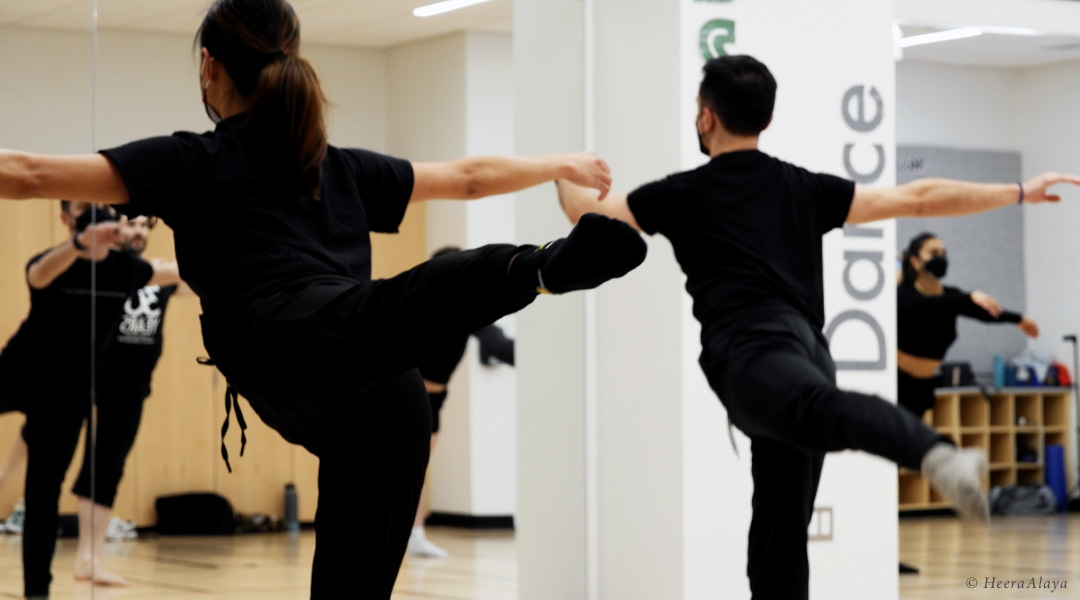
You are the first-ever Smithsonian Institution’s Choreographer-in-Residence based at the National Portrait Gallery [NPG]. What does this position mean to you?
So, it’s [being Choreographer-in-Residence] very personal. I have been in the position for nearly seven years, and it is a wonderful confluence of how I grew up with the background of my life because it allows me to be within a visual arts situation but create through the medium of dance.
In another way, there is a considerable responsibility to enliven stories from the collection, which speak to the canvas of American history that has not necessarily been placed at the forefront of the collection in the past. Much of what I do is to look for diverse stories—I think about diversity to allow audiences to contemplate the history of America in a three-dimensional way.
How does the responsibility that comes with the honour [of being Choreographer-in-Residence at the National Portrait Gallery] weigh on you?
I am always very cognizant of my responsibility and trying to figure out how to make beautiful and sublime art. Many artists approach the question of equity, inclusion and diversity in a way that is sometimes more cerebral. And yes, I am very interested in going through a cerebral process but ensuring that it maintains an artistic dance quality within that versus moving into performance art.
Does your position at the NPG and access to resources allow you to create as you wish?
The one exciting thing for me is that after seven years at the NPG, I am starting to move through different museums nationally. And that is exciting—we are launching all these new relationships this coming season—we will be at the University of Art in New Mexico, the Baltimore Museum of Art and the National Building Museum.
I am in conversation with three other museums nationally—with different collections—located on different coasts of the United States continent. I am excited because I have learned how to work with many different museums out of this residency, study and embrace various collections, and figure out a way to honour those collections through dance.
I am trying to remember if I heard you say this in person or if it was in one of your interviews: that with access to the National Portrait Gallery [NPG], you walk in the gallery late at night.
Oh, it’s so great. An example is after hours at the museum [NPG] with George Takei (he played Sulu in Star Trek; his photo is in the National Portrait Gallery collection). We [Dana and George] met down there one night to talk and walk through the museum. It’s quite wonderful to have these moments to explore a collection without other individuals and, in choosing so, to converse with one individual while you are walking (or I could walk by myself, too). It is all unique, and I love that; it feels very personal.
Considering your humble beginning, having access to this world must be surreal.
It makes me think of my parents’ unrequited dreams. I believe that all of us—children of parents—have our hopes and dreams, and some of those dreams don’t come to fruition in our lifetime. From the moment they hold us as babies, we are embedded with their hopes and dreams, which become part of our calling.
Do you need specific intelligence to compose eloquently?
That is an interesting question. Because language was such an issue from a young age, communication verbally and in writing was challenging. Going to bilingual schools and speaking Spanglish, English, and some Korean, my kinesthetic and visual understanding of the world or intelligence drives me.
How did you, as an individual, hone your authenticity and art form?
I hand it to my parents—I watched them be individualistic within their art forms. If a choreographer can tap into their strengths and individualism, they will succeed. I have never considered following trends. Interestingly enough, that has helped my career immensely.
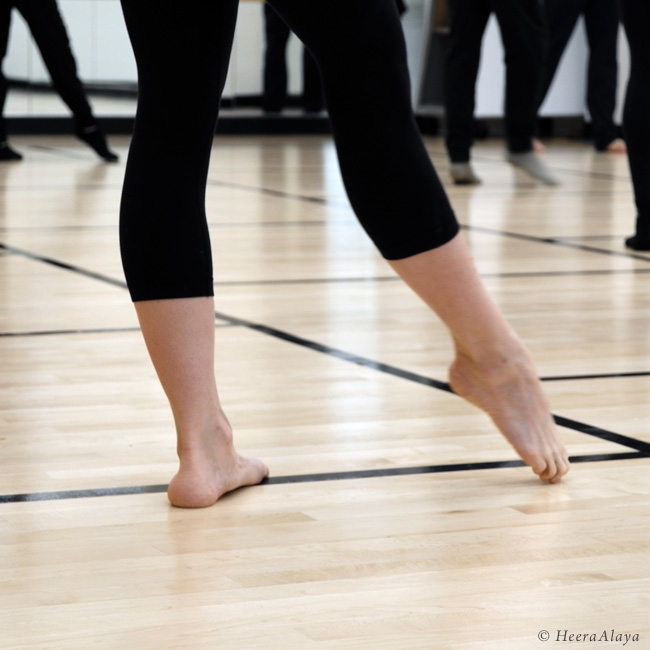
Being a non-conformist has paid off, but the phase when you were in the midst of it all—with no platform—must have been difficult, having to second-guess yourself and take risks every day.
Definitely, but I did not have a choice. I am driven to make art a certain way and explore it the way I do, and I never felt there was an option to vary from that. People sometimes ask,” Why did you become a dancer and a choreographer?” And I always say, “Oh my gosh, there was no other option.” There wasn’t any other thing I wanted to pursue.
Good for us!
[Laughter] Thank you.
Does an artist have to develop personally to develop artistically, or does growth occur concurrently?
It [growth] is parallel. When I look back at my earliest works, I am horrified. At some level, I can see the angst of a 20-year-old and the confusion of a 30-year-old. Choreographers cannot separate their emotional and subconscious worlds from their work—it parallels the human experience. So where you are, what your emotional age is will be reflected in the emoting.
You practised martial arts. Have martial arts and meditation come together?
When I started martial arts as a young child in New Mexico, I had this excellent teacher, Nishida Makio; he is still a wonderful master martial artist in Texas, where he continues to have a school. He started every class with meditation and was so disciplined that he demanded extreme discipline from all of us. I learned you must put into the body’s physicality, which transferred perfectly into the dance studio.
Speaking of discipline, you have said you are highly empathetic towards your dancers but also very firm in disciplining them to prepare them for the real world.
I empathise with a dancer’s journey because of the demands on a young 20-something. So much is demanded of a young dancer—in our field, the body is medium, and the body reaches its peak for dance in the 30s, and then you are on the decline.
Their front lobe is not completely developed until about 25 or 26. So, there are many questions and confusion in the world for dancers. But I am also candid with young dancers; every dance teacher and mentor should be telling a dancer what they need to work on and where their future in the field lies. Honesty is an essential part of every art form. And sometimes systems are set up to not necessarily be honest, not to sit down and have those sit-down talks with people, which gets dancers off track for a long time.
Why do you say artists are like brushstrokes on a canvas?
Growing up, seeing my parents create visual artwork, I saw the stage as a canvas—on the proscenium stage, there was canvas after canvas. So, I am looking at the overall appeal of the stage and when the dancers move, which is like brushstrokes; for me, they are calligraphy.
Do your dancers have to be wary of what they eat?
[Laughs] Oh no. They [Dana’s dancers] are so conscious about discipline and the company’s aesthetic that I never have to advise them to be careful. It is an exciting time for dance—these conversations about body image are changing, and dance aesthetics are also evolving. I was at the costume storage unit recently and was looking at costumes from 10 years ago, which were so tiny. None of my dancers can fit into these costumes.
I have seen your dancers; they are fit.
We embrace change and want the dancers to be healthy. Any dancer who is not healthy is problematic—not just for them but also for the repertoire; it is not functional in the long term.
How did you transition from a dancer to a choreographer?
I love the creative process more than being a dancer. Stepping off stage was a huge growth period for my work, and it was such a relief to know that dance wasn’t over—it was the evolution of it for the next part of my life.
The transition [from dancer to choreographer] was seamless. I stepped off the stage, put a hundred percent of my time into choreography, and coached the dancers without feeling split between getting myself ready for the stage and getting the dancers ready.
Do you ever miss dancing?
I am very satiated by the process of choreographing—I teach company classes, and I move when I teach, so I don’t miss dancing. Also, as I get older, there are inevitable aches and pains, like how my feet (bone spurs) and back feel. I celebrate being engaged in a studio with these beautiful dancers and seeing them dance so closely.
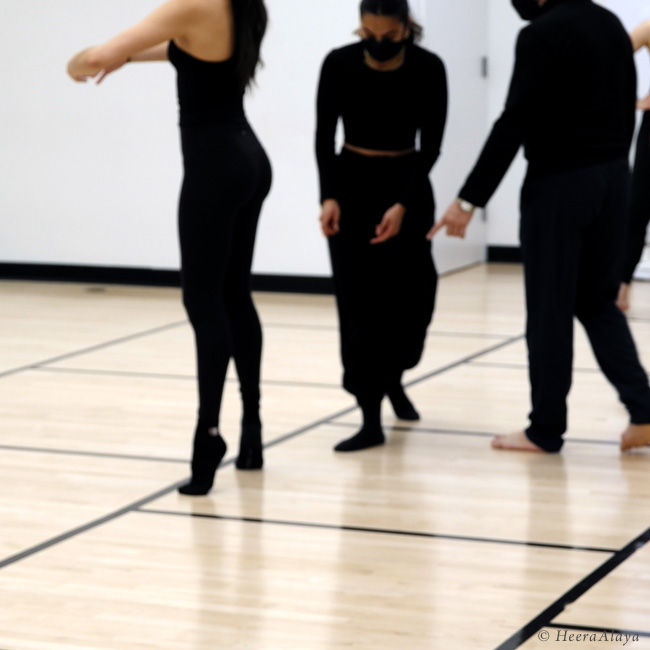
Take me into your process of costume design. For instance, what went into making the parasols used by your dancers in your dance work, El Muro [The Wall]? How do you visualise your choreography, and what steps do you take to design costumes?
There is a story of “La Llorona”—a weeping woman who searches through a city’s water channels looking for her drowned children, and that is an image I grew up with. The Day of the Dead images often have these parasols from another period. So I thought: I need these parasols in this piece because they are part of that identity.
Once I have a concept, I call collaborators and see whether they are available, sit down with them, and say, “This is the concert date; can we work backwards?” I work concurrently with designers.—keeping the costume designers informed on how ideas are evolving and inviting them to the rehearsals.
Can you take time off between your performances?
No, that doesn’t happen. I have difficulty going on a vacation; I get anxious.
[Laughs] I don’t switch off—my time is while choreographing. If I am on tour and get a day to explore historic sites and buildings, or if I am researching something, learning about museum collections, that is exciting.
Sometimes, thoughts and visuals float in and quickly flutter out like butterflies. How do you throw your net on thoughts quickly enough and organise yourself?
I make a mental note and later a visual note in my notebook. My sketches are enough to trigger and remind me of what fascinated me at that moment—the specific thought about a movement or seeing a particular movement.
Also, I have been dream journaling for the last 30 years, which has helped me remember things. I always keep a journal next to the bed. If I have a significant dream, I will write it down as fast as possible and then put it down. When I wake up, I read my notes, recalling the dream. At times, the subconscious is constantly solving problems. I will go to sleep and think: Ah, I don’t know what to do with this piece of choreography; this transition is not working, and at 3:30 am, I will have a dream about what it should look like, and I will sketch it out and write it down and go back to sleep. I am a big believer in figuring out a way to recall those crucial thoughts, those essential downloads of information.
Sometimes, a dancer will be moving around in the corner or joking around, and I will look over and think: “Oh, my gosh, that is the best gesture that I just saw.” And I will stop rehearsal and say: “Oh, we need to just look at this gesture and input it in the choreography,” which always makes the dancers laugh, ”Oh, Dana is always watching everything in the room.”
Even when I walk down the street or at a social event, I am hardwired to see the movement constantly, and I think I have to stay very calm so it does not drive me a little crazy. When I go to social events, let’s say to a gallery opening, I always go home and sit quietly for at least an hour because it overloads me. So, I see movement in everything constantly.
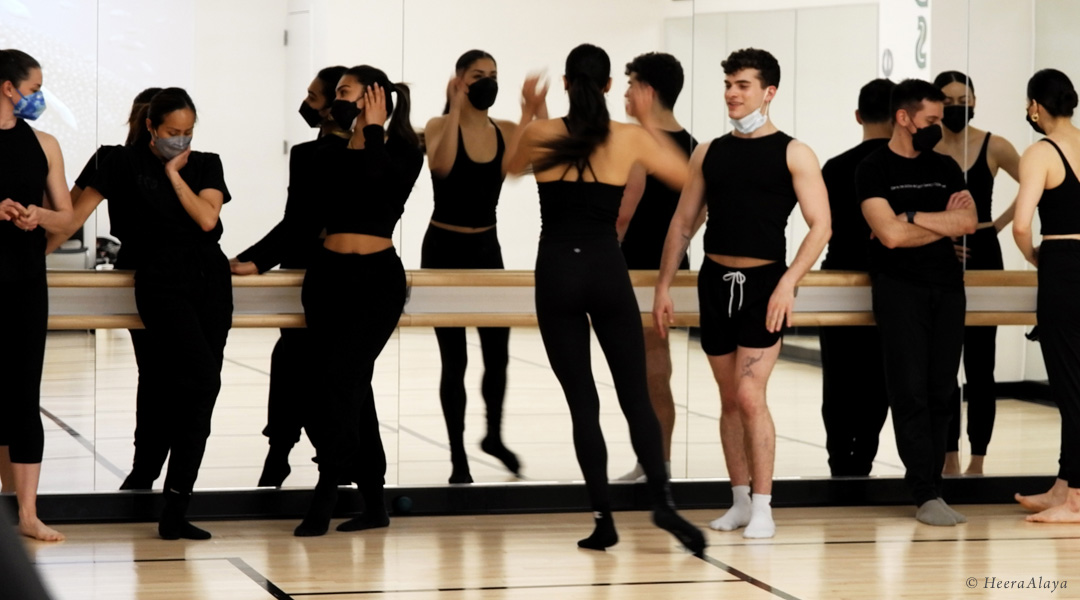
Do you engage in specific rituals to stay organised?
I am a big believer in getting up very early. I treasure my time from 4:00 am to 7:00 as I can get in a good six hours of clear work (before getting interrupted by the dogs, the household waking up and the phone ringing). Early morning is when I write and research. For example, I am researching a potential new subject for a book right now, and I can go down the rabbit hole of exploration in my mind at that time.
How do you keep your multiple projects on track?
I used to, and still sometimes, keep projects in very specific piles on my desk. I love the tactile quality of paper (I am old school that way.), but at the same time, my wonderful assistant is amazing at Google folders, etc., which keeps me going. There are many ways things are organised, depending on the project.
From a business perspective, the one thing I do is that if I have a request for an email (or a call) that I can attend to immediately, I will do that so it doesn’t get put on a long list of things to do. I am the opposite of a procrastinator.
How has travelling shaped you as a person?
Travel has been essential because it has helped me better understand American culture, how to engage as a global citizen, and informed my dances (I have been able to engage with other artists abroad and think about how different cultures are embodied through dance.).
I suggest every artist travel as much as possible while developing their aesthetic. You have to get out of the studio. It is not just about four walls—and one of the walls is just mirrors— because that view is just myopic, and you won’t understand the world.
Is there a particular place that has profoundly impacted you?
Every place I have been has been impactful in different ways—for instance, my collaborations in Peru and dialogues in Pakistan and Afghanistan.
What prompted you to write your memoir, Chino and the Dance of the Butterfly?
The great quieting occurred due to the COVID-19 pandemic. I was accustomed to getting up and running to meetings and going to the dance studios, and suddenly, everything shut down. During COVID, I was zooming our dance classes with the dancers, keeping them moving. While I was doing museum classes, my dogs ran through, kicking a plant, and there was air dust; it was feeling that the world was falling apart—
And I remember one morning thinking: How did I get here? What is going on? How long is this [pandemic] going to last? And just for my sanity, I needed to explore the past—to understand, once we get out of this, what do I want to do out of my life? What has been driving me my whole life?
I realised that with dance and non-profits, we are always in crisis management mode, always running. With a choreographer, I am planning what we are doing two years from now. So sometimes, I am not even consciously within the dance studio with the project I am working on. So out of all of that chaos, when that chaos stopped, I thought: Oh, my gosh, I need to take a deep dive into how my work was formed because this can help me when we get out of this pandemic, know how to live my life better.
What did the process of excavating memories do for you?
It was such a rich process. It was shocking how many memories I had just stored away and hadn’t thought about for decades. Memories that were so important at one point in my life just disappeared. I felt like an archaeologist, just digging and digging and going through boxes of old photos, talking to my mom and brother on the phone, and reconnecting with old friends from Santa Fe.
The big challenge was to put the pieces together—putting together a giant puzzle—I wasn’t sure how to piece it all together, to make logic of it for other individuals (when they would read my book), not just to make sense of my life but maybe to bring about other individuals’ and readers’ own memories for themselves and make them think about their lives and their futures.
Why sets your memoir apart?
Few memoirs about hyphenated Asian American artists and the understanding of the individual journey exist (and we need more examples). It is also essential to know that there is a place within the arts communities of America for Asian Americans and for hyphenated identities in our contemporary world.
You mention writing parts of your book from a child’s point of view.
I didn’t want to skew my vivid memories by filling them in with adult memories. I felt the sensations of my memories of a child, for instance, talking about my mom’s rice cooker and how she cooked and thinking about her when I watched her weave or make her art, or my father as well; those are perspectives and memories that are very strong for me, and I realised there are very much from a young person perspective. Because of that, they were richer in imagery. Whereas, if I looked at it and dissected it as an adult, I might lose some of that visceral descriptive quality.
You also say, “For a child, everything appears bigger,” which is true.
Oh, completely!
I thought I could touch the sky by placing a chair on a desk!
Right. Right. You know, sometimes children are born with this incredible wisdom, whether it is from another life or whether they already know this encoding of what this life will be. And through a series of years, it is unlearned and hidden away and locked away like a child’s ability to feel unbridled, right, suddenly gets bridled by society, by the family structure, by peers, by teachers, and it starts to unlearn it’s full potential. Then, we must remember that we all have our full potential and figure out how to get back to it.
Dana, I want to end our conversation by complimenting you. Your spoken word is similar to your choreography—you create a stillness to gather your thoughts and articulate them beautifully.
Oh, thank you. It’s so lovely of you to say that. It [coherent communication] comes with growing up trying to figure out different cultures and communicating clearly. Sometimes, a word will come to me in Spanish before English; sometimes, I wish to say that in Korean. Things get jumbled in my mind, so I stay calm.
Learn more about Dana Tai Soon Burgess.


